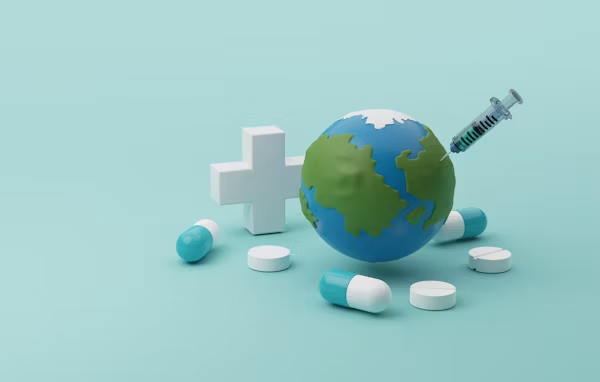Understanding the Concept of Harm Reduction
Harm reduction is an approach to addiction and public health that focuses on minimizing the negative consequences of substance use rather than insisting on immediate abstinence. Instead of viewing recovery as an all-or-nothing process, harm reduction recognizes that each individual’s journey toward wellness is different. It emphasizes safety, dignity, and compassion—meeting people where they are, without judgment. Many communities and organizations, including addiction treatment centers in Kentucky, are increasingly integrating harm reduction principles into their programs as part of a broader continuum of care. The goal is not to enable substance use, but to reduce risks like overdose, infection, and isolation while creating pathways toward treatment and recovery.
What Harm Reduction Looks Like in Practice
Harm reduction can take many forms depending on the needs of the community and the individual. Common strategies include:
- Needle exchange programs: Provide clean syringes to prevent the spread of infectious diseases such as HIV and hepatitis C.
- Naloxone distribution: Makes the life-saving overdose-reversal medication widely available to users, families, and first responders.
- Supervised consumption sites: Safe, medically monitored locations where people can use substances under supervision, reducing overdose risk.
- Medication-Assisted Treatment (MAT): Combines medications like buprenorphine or methadone with counseling to reduce cravings and prevent relapse.
- Education and outreach: Provides resources on safer use, recognizing overdose symptoms, and connecting people with treatment options.
According to the Centers for Disease Control and Prevention (CDC), harm reduction programs not only save lives but also increase the likelihood that individuals will eventually seek formal treatment.
Why Harm Reduction Works
The success of harm reduction lies in its compassion-based philosophy. Many individuals with substance use disorders avoid treatment because of fear, stigma, or judgment. Harm reduction breaks down those barriers by offering care that prioritizes humanity over punishment. Here’s why it’s effective:
1. Builds Trust and Encourages Engagement
When individuals feel respected and supported, they’re more likely to engage with healthcare providers and social services. This connection often serves as the first step toward treatment and recovery. By establishing trust, harm reduction creates bridges to long-term wellness instead of walls of shame.
2. Prevents Overdose and Saves Lives
The primary goal of harm reduction is to keep people alive. Access to naloxone, fentanyl test strips, and overdose prevention education dramatically decreases fatalities. Each life saved is an opportunity for future recovery.
3. Reduces Public Health Risks
Programs that promote sterile supplies and safer use practices significantly lower the spread of bloodborne diseases. These initiatives not only protect those struggling with addiction but also safeguard entire communities.
4. Supports Gradual Recovery
Not everyone is ready or able to quit immediately. Harm reduction provides a realistic and compassionate alternative by helping individuals make incremental changes that lead toward sobriety. It acknowledges that small improvements—like reduced use, safer behavior, or engagement with support services—are meaningful milestones.
5. Promotes Dignity and Reduces Stigma
Addiction is often accompanied by feelings of guilt and alienation. Harm reduction reframes recovery as a human rights issue, promoting compassion and inclusion. When people feel valued instead of judged, they’re more likely to believe in their ability to change.
Addressing Common Misconceptions
Despite its evidence-based success, harm reduction sometimes faces criticism from those who misunderstand its intent. Some believe it condones drug use, but in reality, harm reduction recognizes the complex nature of addiction and the barriers to treatment. It’s not about giving up on recovery—it’s about keeping people safe until they’re ready to take the next step. Research consistently shows that harm reduction programs do not increase drug use; instead, they reduce overdoses, improve mental health outcomes, and connect individuals with care.
The Role of Harm Reduction in Comprehensive Treatment
Harm reduction is often the first step in a larger continuum of care. It opens the door to recovery by meeting immediate safety needs and then guiding individuals toward treatment options such as detox, therapy, and counseling. Many addiction treatment centers in Kentucky incorporate harm reduction strategies alongside traditional recovery programs, offering clients flexibility and choice in how they begin healing. This integrated model recognizes that recovery is not a single event but a lifelong process that benefits from compassion, structure, and support.
The Bridge to Recovery: Meeting People Where They Are
The Bridge to Recovery embraces a whole-person approach to healing, understanding that recovery begins the moment someone reaches out for help. By combining evidence-based therapy, compassionate care, and education, the center helps individuals move from harm reduction toward long-term sobriety and mental wellness. Their mission is to meet clients where they are while providing the guidance and support needed to move forward safely and confidently.
Building a Path Toward Hope and Healing
Harm reduction saves lives, preserves dignity, and creates opportunities for recovery. Whether someone is just beginning to consider treatment or has struggled for years, compassion and connection are the keys to change. If you or someone you love is facing substance use challenges, reaching out to a trusted treatment provider can be the first step toward a safer, healthier future. Help is available—and every small step toward safety is also a step toward recovery.

